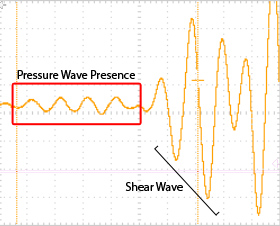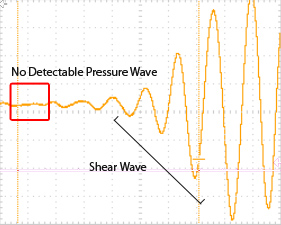Background
Shear waves cause a particle displacement normal to the direction of propagation. A common illustration of a shear wave is the motion in a rope when one end is pinned in place and person whips the other end. Shear waves cause a particle displacement normal to the direction of propagation. A common illustration of a shear wave is the motion in a rope when one end is pinned in place and person whips the other end. Shear waves only exist in media that have significant shear moduli, or friction between neighboring planes of particles. In theory these are solid materials, although shear waves are present in fluids at a much smaller ratio compare to a pressure wave. A good animation of shear waves can be seen at this link.
Measuring and comparing shear and pressure wave signals can give information about a medium i.e. composition, frailties, and inconsistencies. Such methods are used from geological surveys to non-destructive testing.
Capabilities and Contributions

Figure 1: Pressure wave presence in shear wave signal without CTL technology.

Figure 2: Pressure wave reduction in shear wave signal with CTL technology.
